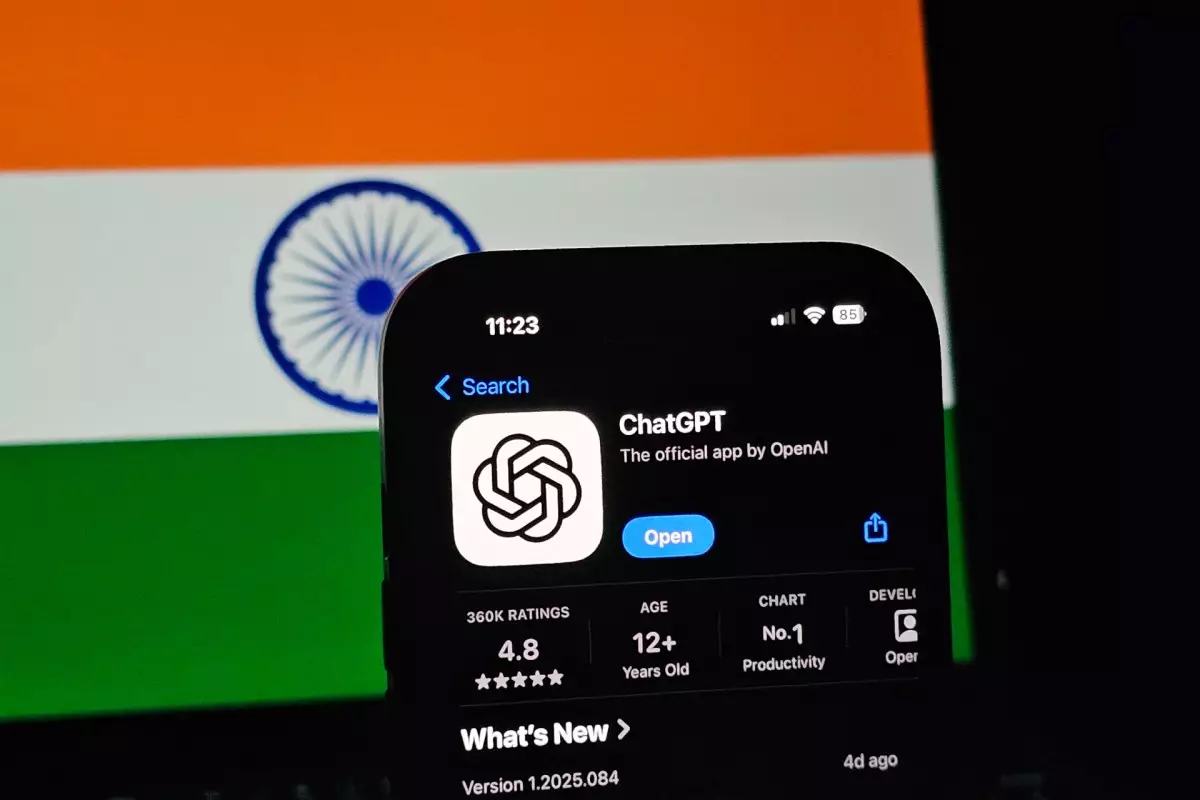For years, the tech giants of the U.S. have set their sights on India, a country with an expansive and rapidly growing internet user population. Among these is OpenAI, an organization spearheading innovation in artificial intelligence. The firm has identified India as one of its fastest-growing markets for its flagship product, ChatGPT. However, while interest seems significant, the real challenge lies in monetization. The paradox is striking: despite India’s vast online population, revenue generated from ChatGPT subscriptions lags significantly compared to the U.S.
Stark Revenue Discrepancies
Analytics from SensorTower paint a concerning picture. Indian users have collectively spent just $8 million on ChatGPT subscriptions since the beginning of 2023. In contrast, their U.S. counterparts reportedly disbursed a whopping $330 million towards those same subscriptions. This disparity raises eyebrows and invites speculation. One prominent reason for this revenue gap appears to be OpenAI’s pricing strategy. The cheapest subscription tier is priced at $20 per month, a steep amount when compared to the average income in India. This misalignment of pricing and purchasing power could stymie growth in a market bustling with potential but sensitive to cost.
Localization: A Necessary Step
The absence of a localized pricing model could be a significant hurdle for OpenAI. In a country where a significant portion of the population is cost-conscious, offering a product priced at a premium can deter potential users. A revision of pricing strategies with a focus on affordability and local currency could unlock various doors for OpenAI, making the AI tools more accessible to a broader audience. It’s not merely about entering a market; it’s about understanding its dynamics, and this empathetic lens must guide OpenAI’s strategy.
Strategic Alliances: The Road Ahead
As OpenAI wrangles with issues of pricing, there are signs of strategic maneuvering aimed at propelling growth. Reports indicate that the company is in talks to collaborate with Reliance Jio, one of the largest mobile service providers in India. This partnership could serve as a launching pad for amplifying ChatGPT’s visibility among a larger user base. Such an alliance could facilitate easier access to the technology, opening the floodgates for potential revenue while simultaneously placing OpenAI in a competitive position.
Organic Growth: A Silver Lining
Despite the substantial challenges, the organic growth of ChatGPT in India reflects an underlying interest in AI technologies. According to recent data, more than 20% of the downloads for the ChatGPT Android app this year have originated from India. This engagement underlines that even with barriers, there exists a palpable demand for AI-powered solutions. Such grassroots adoption showcases potential for further growth, provided OpenAI can harness it effectively through strategic moves.
The Future: Optimism Amidst Challenges
It’s essential to acknowledge that while current revenue figures in India may be discouraging, the long-term prospects could be vastly different. With COO Brad Lightcap stating that India is on an upward growth trajectory for ChatGPT, the emphasis is not solely on today’s numbers but on the long-term vision of establishing a billion-user platform. OpenAI’s ambitions of extensive reach are undoubtedly ambitious, yet they form the backbone for a deeper exploration into a market rich with opportunities, provided they approach it with the necessary intent and understanding.

